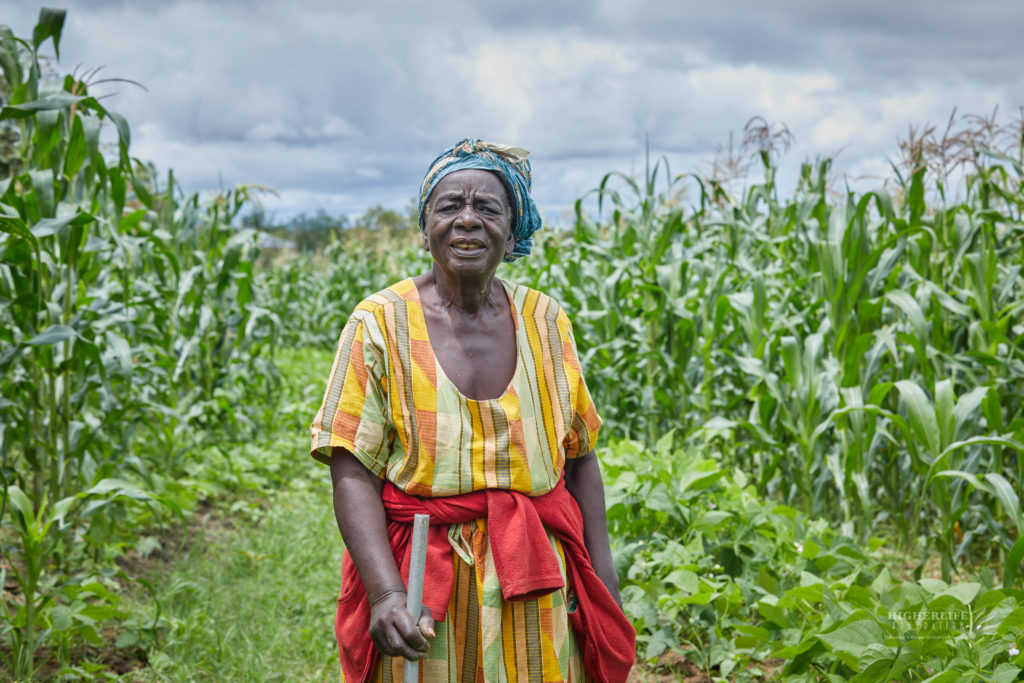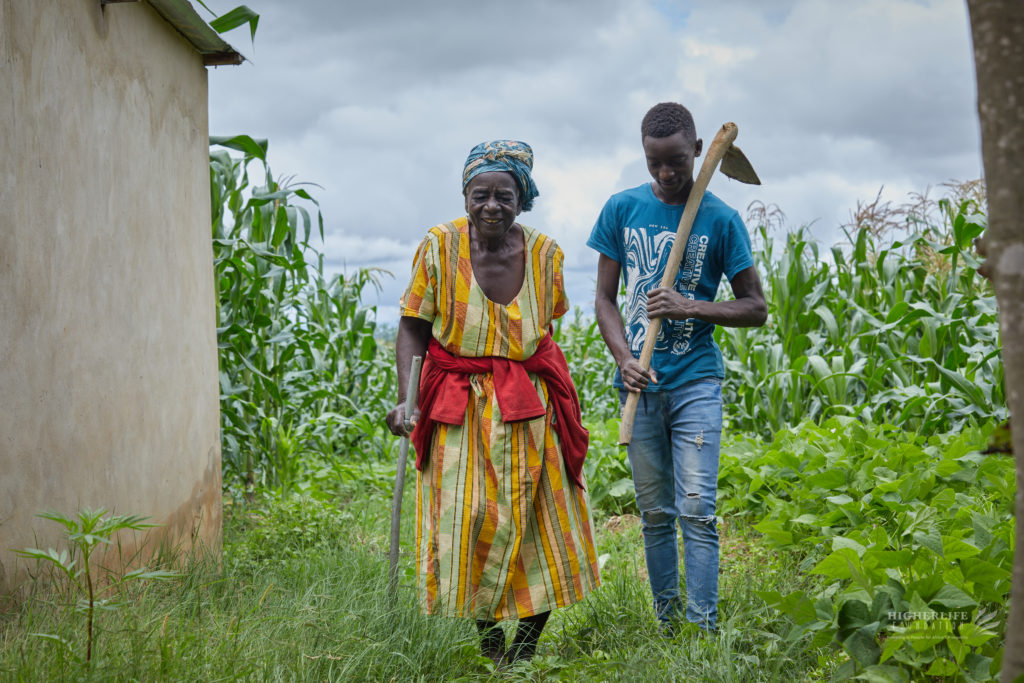
It is mid-morning in Madziwa, a village in Mashonaland Central’s Shamva North District, 137 kilometers northwest of Harare. Gogo Agnes Kasaira leans on her crutch for balance. She is rising from the footing of her rondavel kitchen, and the wall helps her gain ground. Soon as she is upstanding, Gogo Kasaira calls her 15-year-old grandchild, Maron, who is getting ready for school. Like too many teenage boys, Maron often struggles with straightening his collar, a limitation that has birthed a daily ritual where Gogo corrects his uniform.
A simple daily tender act of love. Soon after the upper part of his school shirt is folded to decency, Maron bids farewell. He follows a path through a maize field, venturing on a five-kilometre journey to school. The same maize has helped keep them in school in the face of economic difficulty.
At 74, Gogo Kasaira should have been reducing her physical workload, but that has not been the case. Gogo is a Shona word which translates to grandmother, usually used to prefix salutations to elderly women.

With four grandchildren under 16, Gogo must continue working on her farm to help raise the children.
“My only remaining son fathered two of my grandchildren. Their mother died, so I take care of them. The other two lost their parents and are now under my care,” says Gogo Kasaira. Her field is her only hope to keep them in school, an investment whose importance she understands too well.
“My grandchildren love school. If they fail to go, there won’t be peace in this house. Sometimes they choose to forgo food protesting unpaid fees. It breaks my heart when that happens,” Gogo Kasaira says.
“I didn’t get a chance to go to school when I was young. However, I always wanted to read and write, so I enrolled in adult classes. At least now I can read and write,” she says.
Income from agriculture is the main source of livelihood for millions of smallholder farmers like Gogo Kasaira. When times are good, farmers have plenty of food and can sell their produce to generate a cash income. But times are changing. Increasingly erratic rainfall, declining soil fertility and farm labour shortages mean poverty and malnutrition are persistent challenges.
UNICEF statistics show that over 400 000 children of school-going age are out of school in Zimbabwe, and poverty is the primary cause.
From 2020/2021 HLF has been complimenting Government efforts in training farmers in Climate Smart Agriculture using the Pfumvudza methodology developed by Foundation for Farming. This ensures that rural families are able to feed themselves from small, highly managed plots of land.
Gogo Kasaira is one of about 1,700 farmers in her region benefiting from Pfumvudza.
“We were told that there is a program supporting widows, so we submitted our names. A few days later, we were called to Kaziro, the village next to ours and received training,” says Gogo Kasaira. During the training, she realised there would no longer be a need for oxen to prepare the land, which freed her from knocking on doors at the sign of the first rain-bearing clouds.
“From the time we were trained, we no longer use the whole fields. I now use two plots. We used to apply fertilisers in a wasteful way. This time I received less than what we used to buy, but it almost covered the whole field, save for a tiny portion,” says Gogo Kasaira.
The standard inputs Gogo Kasaira and other farmers under the program received include two kilograms of maize seed, five kilograms of bean seed, five kilograms of groundnut seed, and 12 kilograms of dolomite lime. They also received 25 kilograms of ammonium nitrate, 24 kilograms of Gypsum, 32 kilograms of Compound D, 32 kilograms of Compound L, and 280 grams of Ecoterex.
These packages were given per plot, each spanning 624 square metres – about the basketball court – with 1,456 holes.
“I have two plots I worked on, and I expect [to harvest] around two or more tonnes. My crop is healthy, and I believe I will get the same yield as last year,” Gogo Kasaira says.
Given the average maize yield in Zimbabwe is just 1.3 tonnes per hectare, Gogo Kasaira’s expected yield of two tonnes is a significant step up. Gogo Kasaira uses her harvests to feed her family, grow chickens and pay farm labourers.
“I used to sell the maize, but I figured there were more returns in feeding the maize to the chickens and then selling them.”
“I did my calculations,” she says with a chuckle. The chicks go for a dollar each.
“I use the money to pay fees for my boys [her grandchildren]. I have been carrying this weight alone, but I keep fighting because I want my grandchildren to have a bright future,” she says.


